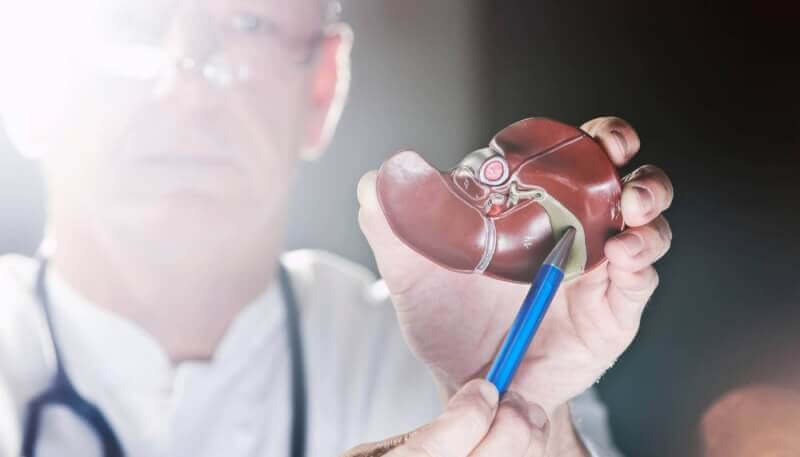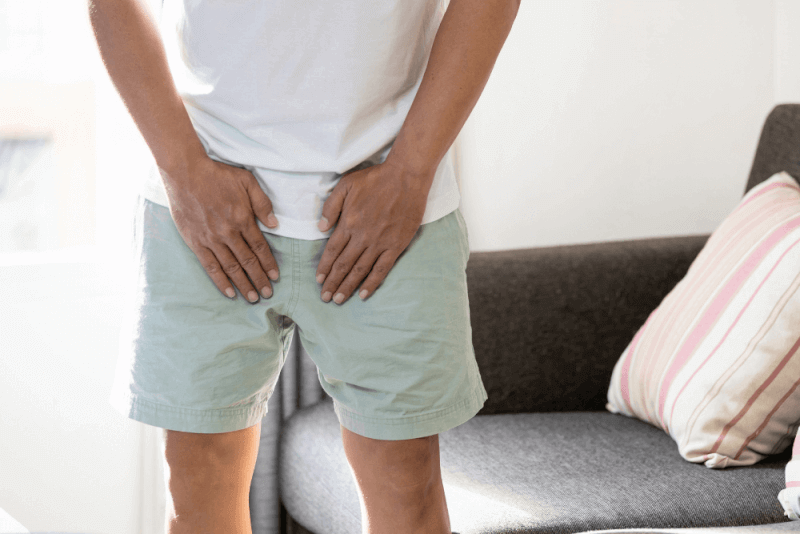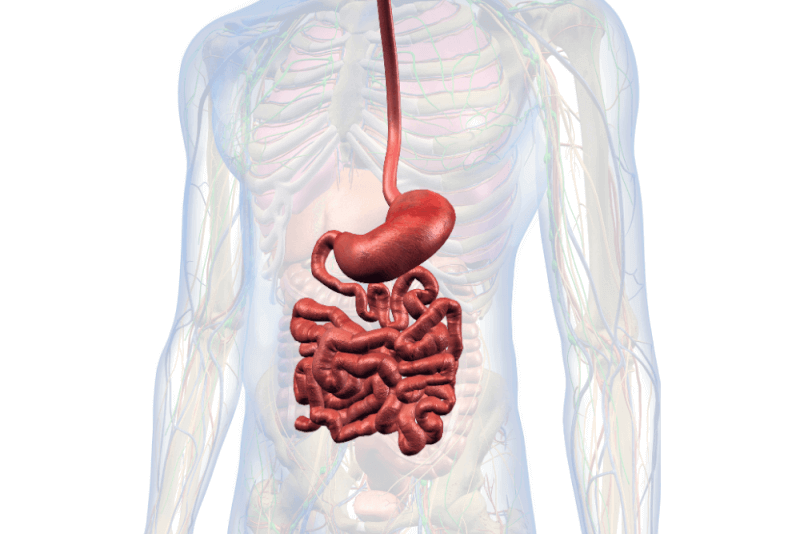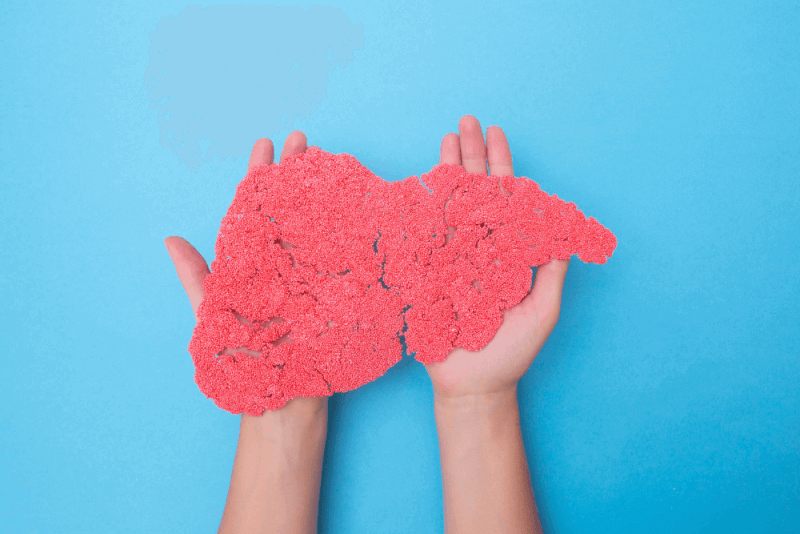What is Gallstones?
The gallbladder, located just below the liver, contains some of the components secreted by the liver. These components can be altered after some diseases in a way that affects the gallbladder. Gallstones are crystalline masses in the bile and bile duct caused by pigments, calcium salts and cholesterol. In addition to cholesterol and pigment stones, iron, phosphorus and carbohydrates may also be found. When it is 3 mm or more in diameter, it is called gallstone, and if it is smaller than 3 mm, it is called bile sludge. These stones are called cholelithiasis.
Gallstones Symptoms
Gallstones, which do not cause complaints most of the time, progress without symptoms in most people. In 90% of patients, gallstones that do not cause any complaints can be recognized incidentally. The following symptoms are commonly manifested:
- Nausea
- Vomiting (vomiting)
- Abdominal pain
- Back pain
- Indigestion
- Abdominal swelling
Initially, pain in the abdomen may be mild or severe, especially in the upper middle right, and may radiate to the back and other areas. In a situation such as fever or chills, there may be an infection in the body. One of the gallbladder problems is chronic diarrhea. Yellowing of the eyes and later yellowing of the skin may also occur. In addition, very light stools and dark urine are symptoms of biliary obstruction.
Causes of Gallstones
Gallbladder The leading causes of excess weight, rapid weight gain and loss, obesity and nutritional disorders, sudden weight loss and genetic predisposition. In addition, people over the age of 40, diabetic patients and unconscious dieters are also in the risk group. Gallstones are more common in women. This is because hormonal changes during periods such as pregnancy, breastfeeding there are variations. Gallstones, which are associated with high cholesterol, can also occur in people with blood diseases.
How is Gallstones Diagnosed?
A medical history and examination of the patient is required. The disease is diagnosed with the necessary laboratory and imaging tests, blood count, liver, urine and stool tests, ultrasound and computed tomography. Ultrasonography can detect even small stones in the gallbladder. Thickening and fluid in the sac are symptoms indicating that the patient has gallbladder inflammation. However, undetected gallstones can also be visualized by endoscopy.
If Gallstones is Not Removed
One of the complications that can occur if gallstones are not removed is swelling and inflammation due to the inability of the bile to drain itself because the sac is blocked by the stone. This causes abdominal pain and high fever. Left untreated, infection can cause serious problems. He needs urgent intervention. Another situation is when the stone falls into the bile duct. This will completely cut off the bile flow and jaundice will occur. This also requires separate treatment. The most dangerous consequence of not removing gallstones is inflammation of the pancreas. This can be life-threatening. For this reason, gallstones should be removed surgically before they cause serious problems.
Gallstones in Pregnancy
It is beneficial for women who are planning to have children and have gallstones to have surgery before pregnancy. Pregnancy may occur during pregnancy can cause serious problems such as jaundice, acute inflammation. You must inform your doctor that you are pregnant. She may not realize that she is pregnant. X-rays and other computed tomography-style applications should not be preferred for diagnosis during this period. During this period, medication and surgical procedures should be avoided due to the development of the baby. Gallstones during pregnancy are planned according to the stage of pregnancy. If the stones do not pose a serious problem for the pregnant woman, a treatment that will not affect the pregnancy and prevent the progression of the disease according to the period of pregnancy and the level of the disease program should be organized. For complaints such as nausea and vomiting, your doctor can initiate treatment to prevent them. However, if the problem is not solved with medication, the gallbladder may need to be removed. The second period of pregnancy is more suitable for intervention. The gallbladder can be removed discreetly through a small incision. The third period of pregnancy, i.e. the last period As the baby grows, the operation becomes more difficult as the space narrows. Therefore, the safest time to intervene is 4. and 6. months. Treatment program during pregnancy in a nutshell, It should be discussed in detail with the physician and decided according to the complaints of the pregnant woman and the period of pregnancy.
Gallstones Treatment Methods
First of all, if gallstones do not cause any complaints, they can be followed under control. Medication is used to dissolve the stones in the gallbladder, but the risk of recurrence is very high.Therefore, drug treatment is not preferred. The definitive solution is surgical removal of the gallbladder. Today, the ideal treatment is laparoscopic (closed) removal of the gallbladder and stones through small incisions. Open surgery may also be decided depending on the patient's condition. If the gallstones are in the duct, they can be removed by a surgical procedure called endoscopic method. Stones in the sac require surgery, either closed or open. With endoscopy, the bile duct is accessed through the mouth and the stones can be removed with this method. While the endoscopy method removes the stones in the bile duct naturally, the laparoscopic method involves surgical intervention through small incisions in the abdomen.
Medicated Treatment
Medication can be used to treat the gallbladder. The patient's complaints can be temporarily suppressed and the stones in the gallbladder can be dissolved with medication, but it is not a definitive solution as the same complaints will recur. For this reason, the success rate of drug treatment is low. Another method for gallbladder complaints is the method of breaking the stones. There is also a risk of new complications with this method used for kidney stones. Radiological interventional methods such as ERCP may sometimes be preferred. With this method, gallstones are removed without surgery. In summary, the most ideal method and definitive solution for gallstones is surgery.
Gallstones Surgery
Three methods are used in gallbladder surgery. One of these is the classic open gallbladder surgery. This method is not preferred because it is more painful and requires a long process compared to other surgical procedures. The patient's recovery time, hospitalization and return to normal life takes longer. In this method, the gallbladder is removed through an incision in the upper right part of the abdomen. This method is more commonly used for any intestinal injury and is preferred to protect from other complications. Removal of the gallbladder is called cholecystectomy. Today, the most preferred method is laparoscopic surgical gallbladder surgery. In this surgical procedure, which is the standard method, the abdomen is entered through the patient's navel and 3 holes are made with the help of a camera. Through these holes, the gallbladder is removed together with the stones. In the surgery, the sac is removed along with the stones because the stones in the sac cause the bile wall to deteriorate due to chronic inflammation, so the symptoms persist. This method is very safe and the patient's hospital stay and return to normal life is shorter. Since the patient has few complaints after the procedure, he/she can return to his/her daily routine within a few days. Another method is robotic gallbladder surgery. Forward The experience of the surgeon is very important in this highly technological method. The procedure time is longer than the other two methods.
After Gallstones Surgery
There is pain at the incision site for 1-2 hours after gallbladder surgery. This pain is not very uncomfortable for the patient. This pain can be controlled with painkillers. Approximately 6-7 hours after gallbladder surgery, the patient can be given food as liquid. The patient should be mobilized with frequent short walks after the procedure. The patient can be discharged on the same day. Bathing is allowed two days after gallbladder surgery. You can return to work and travel within a week after surgery. Care should be taken not to engage in physically demanding activities or lift heavy loads for two to three months. It is also important for your health to take your doctor's recommendations into account.
Gallstones Surgery Nutrition
After gallbladder surgery, the patient may experience some problems during the adaptation process. Solid feeding can be started 24 hours after surgery. Fatty foods that cause gas should not be eaten for 3-4 weeks after the operation. More fibrous, easily digestible foods should be preferred. Postoperative meals should be small and frequent. Raw vegetables and carbonated foods should be avoided. Because it can cause indigestion and digestive problems after surgery. Vegetables such as cauliflower radish should not be preferred. Foods such as eggs, salami, sausage, sausage, red and white meat, nuts should also be avoided.
Gallstones Dissolution Methods
To clean and dissolve stones and sludge in the gallbladder, lemon should be added to drinking water and plenty of water should be consumed. In addition, drinking a mixture prepared by adding 4 tablespoons of lemon juice to a glass of water every morning on an empty stomach will also help dissolve the stones.
What is the Gallbladder?
The gallbladder acts as a conducting organ in the body. Bile is a fluid in the liver. It is produced in 500-700 ml per day. This fluid is transferred from the liver to the gallbladder.When the consumed food mixes with bile after the stomachdigestion begins in full. All carbohydrates, proteins and fats are digested. Bile is involved in the elimination of decomposing substances in the liver and in the absorption of fat-soluble vitamins. The gallbladder is approximately 50 ml in volume and can expand up to six times its volume.
Where is the Gallbladder Located? What does it do? Features
Gallbladder It is a 7-10 cm pear-shaped organ below the liver on the upper right side of the abdomen. This organ is involved in digestion by breaking down the nutrients taken into the body and making them useful. Bile is produced in the liver to store this fluid and release it into the system for digestion. It controls the movement of bile into the small intestine and secretes bile by contracting the biliary tract.










